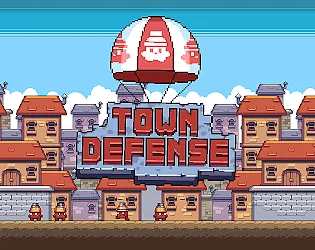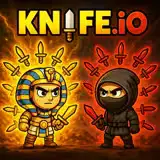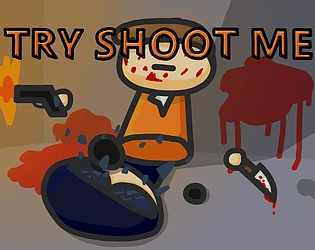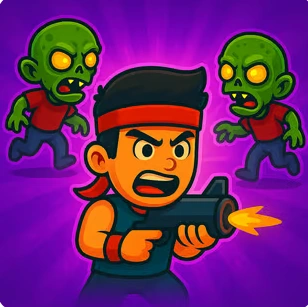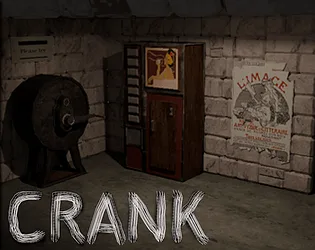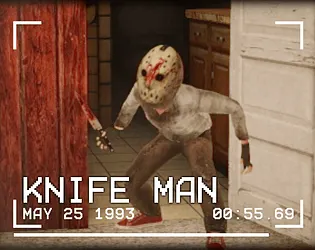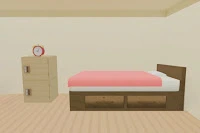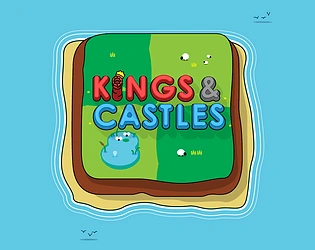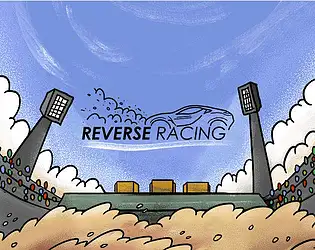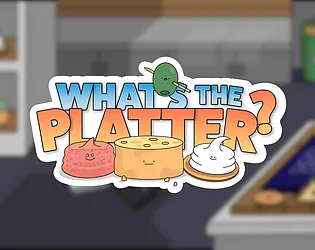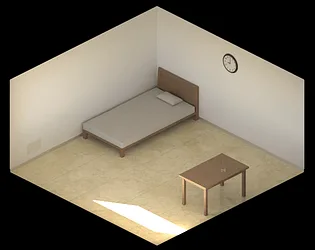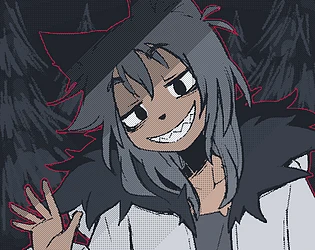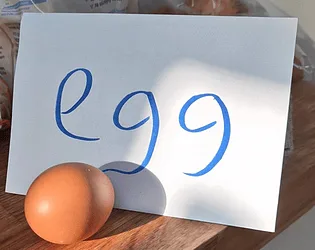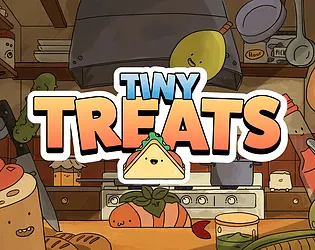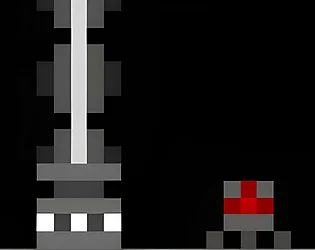
Photon Path
Guide light beams as a spider to illuminate crystals in clever PuzzleScript puzzles
Photon Path
Light Manipulation Through Eight Legs

Photon Path presents a unique premise in the puzzle game world: you're a spider tasked with illuminating crystals using strategic light manipulation. Built with PuzzleScript, this minimalist logic puzzler strips away visual complexity to focus on pure spatial reasoning and light physics. Every level is a carefully constructed challenge where your spider must navigate tight spaces, interact with light sources, and guide photon beams to their crystal targets. It's deceptively simple at first glance, but the complexity emerges as you discover how light behaves, how objects interact, and how your spider's positioning affects the entire system.
The brilliance of Photon Path lies in its elegant constraints. You can't directly move light—you can only position yourself and interact with the environment in ways that redirect photons toward their destinations. This indirect control creates fascinating puzzle scenarios where the solution requires thinking several steps ahead, understanding light propagation, and recognizing how seemingly unrelated elements connect through photon beams.
🎮 What is Photon Path?
Photon Path is a grid-based logic puzzle game created with the PuzzleScript engine, where you control a spider navigating rooms filled with light sources, obstacles, and crystals that must be illuminated. The core challenge revolves around understanding how light travels through the environment and manipulating the level elements to create paths that connect light sources to crystals.
As a PuzzleScript game, Photon Path embraces minimalist design: clean pixel art, turn-based movement, grid-based positioning, and clear visual feedback. There are no time limits, no scores, no distractions—just you, the spider, and a series of increasingly complex light puzzles that demand logical thinking and spatial awareness.
🕹️ Controls
Photon Path uses simple directional controls typical of PuzzleScript games:
| Action | Control (Option 1) | Control (Option 2) |
|---|---|---|
| Move Spider Up | ↑ Up Arrow | W |
| Move Spider Down | ↓ Down Arrow | S |
| Move Spider Left | ← Left Arrow | A |
| Move Spider Right | → Right Arrow | D |
| Undo Last Move | Z | U |
| Restart Level | R | R |
The controls are presented at the start of the game, ensuring you understand all available actions before tackling puzzles.
🧩 How to Play Photon Path
Core Mechanics
Photon Path revolves around several interconnected puzzle elements:
Spider Movement
You control a spider that moves one grid space at a time in cardinal directions (up, down, left, right):
- Turn-Based Movement – Each directional input moves the spider exactly one space
- Grid-Based Positioning – All elements align to a grid, making spatial relationships clear
- Obstacle Collision – Walls and certain objects block movement
- Strategic Placement – Your spider's position often affects how light behaves
The spider isn't just a cursor for selecting actions—its physical position in the environment is often crucial to puzzle solutions.
Light Sources
Light sources generate photon beams that travel in specific directions:
- Directional Emission – Light beams travel in straight lines from their sources
- Beam Propagation – Photons continue until hitting obstacles, boundaries, or targets
- Line-of-Sight Rules – Understanding what blocks or permits light passage is essential
- Activation States – Some light sources might be toggleable or conditional
Learning how light behaves in Photon Path is fundamental to solving puzzles.
Crystals and Illumination
Crystals are your targets—objects that must receive light to complete levels:
- Illumination Requirement – Each crystal must be hit by a light beam
- Clear Indicators – Visual feedback shows which crystals are properly illuminated
- Multiple Crystals – Advanced levels require illuminating several crystals simultaneously
- Path Precision – The exact path of light often matters, not just hitting the crystal
The victory condition is simple: illuminate all crystals in the level.
Interactive Elements
Photon Path likely includes various puzzle elements you can manipulate:
- Mirrors/Reflectors – Objects that change light beam direction
- Pushable Blocks – Objects you can move to redirect or block light
- Switches/Triggers – Mechanisms that alter light sources or pathways
- Transparent Barriers – Objects that allow light through but block movement (or vice versa)
Understanding how to interact with these elements expands your puzzle-solving toolkit.
Puzzle-Solving Approach
Success in Photon Path requires systematic thinking:
Analysis Phase
Before moving, survey the level:
- Identify Light Sources – Where do photons originate? In which direction do they travel?
- Locate Crystals – Where are your targets? How many must be illuminated?
- Spot Interactive Elements – What objects can you manipulate? How do they affect light?
- Trace Current Paths – Where does light currently travel? What's blocking desired paths?
This initial analysis reveals the puzzle's structure and hints at potential solutions.
Solution Planning
Photon Path puzzles reward planning over trial-and-error:
- Work Backwards – Start from the crystals: where must light come from to reach them?
- Identify Obstacles – What's preventing light from reaching crystals currently?
- Plan Interactions – What sequence of movements and object manipulations creates the needed light paths?
- Consider Spider Position – Where must your spider be to execute the plan? Can you reach those positions?
The best solutions often emerge from understanding the end state and working backwards to determine the required steps.
Execution and Refinement
Once you have a plan, execute carefully:
- Step-by-Step Movement – Follow your planned sequence precisely
- Observe Feedback – Watch how light changes with each action
- Use Undo Liberally – The undo function (Z/U) lets you backtrack without restarting
- Restart When Needed – If you've created an unsolvable state, restart (R) and try a different approach
Photon Path rewards careful execution and willingness to learn from failed attempts.
Strategic Depth
As Photon Path progresses, puzzles introduce layered complexity:
Sequencing Challenges
Some puzzles require specific move orders:
- Order-Dependent Solutions – Moving object A before object B works; reversing the order fails
- Temporary Blocking – Using objects or your spider to temporarily block light while setting up other elements
- Cascading Changes – One action triggers multiple light path changes
Understanding sequence dependencies separates simple solutions from elegant ones.
Multi-Crystal Coordination
Advanced levels demand illuminating multiple crystals:
- Shared Light Sources – One beam must somehow reach multiple crystals
- Independent Paths – Different light sources must each reach specific crystals
- Conflict Resolution – Setting up one crystal's illumination might disrupt another's
These puzzles test your ability to see the level as an integrated system rather than isolated components.
Spatial Constraints
Photon Path uses limited space to create difficulty:
- Tight Quarters – Restricted movement options force creative solutions
- Positioning Puzzles – Your spider must occupy a specific spot, but reaching it requires careful maneuvering
- Movement Efficiency – The solution exists but requires optimal path-finding to execute
Spatial awareness becomes increasingly important as levels grow more confined.
📸 Photon Path Puzzle Progression
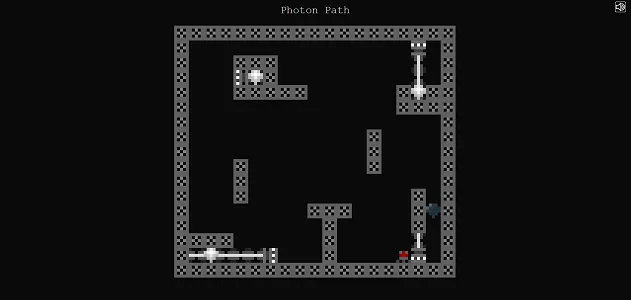
🎲 Introduction - Basic Mechanics
Your first Photon Path puzzles introduce fundamental concepts: light sources emit beams, crystals need illumination, and your spider can move and interact with objects. Early levels might have a single light source, one crystal, and a simple obstacle blocking the direct path. You learn that pushing a block or moving yourself can redirect light to reach the crystal.
These introductory puzzles establish the game's language: how light behaves, what you can control, and what victory looks like. They're gentle teachers that build confidence before introducing complexity.

🧠 Intermediate - Layered Complexity
Mid-game Photon Path introduces multiple interactive elements and more complex light paths. You might face puzzles with mirrors that redirect beams at 90-degree angles, requiring you to position them precisely to guide light through a maze-like path to distant crystals. Or puzzles where you must illuminate two crystals using a single light source by carefully arranging reflectors.
These levels demand planning: you can't just move randomly and hope for success. You must visualize the desired light path, identify which elements need manipulation, and execute a deliberate sequence of moves. The satisfaction comes from seeing your planned solution work perfectly.
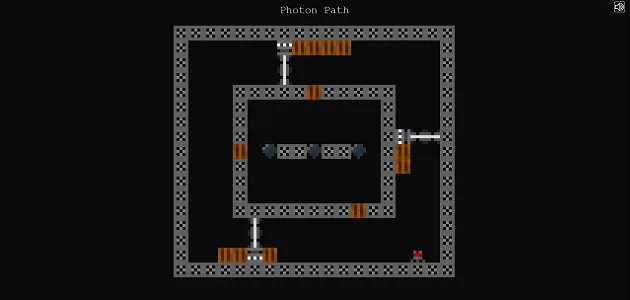
⚡ Advanced - Multi-Step Solutions
Late-game Photon Path presents puzzles that require sophisticated multi-step solutions. You might need to push blocks to create temporary pathways for your spider, then use those positions to push other blocks that redirect light, then move yourself to a final position that completes the light path. These puzzles have multiple crystals, limited space, and numerous interactive elements that must be manipulated in precise order.
The challenge shifts from "what's the solution?" to "how do I execute this complex sequence without creating dead ends?" One wrong move early can make the puzzle unsolvable, requiring a restart. But the mental satisfaction of successfully navigating these intricate challenges makes them deeply rewarding.
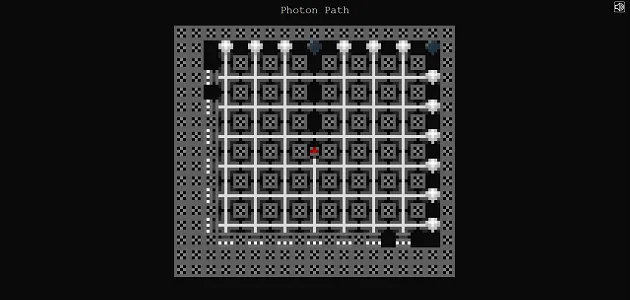
🏆 Mastery - Elegant Solutions
True Photon Path mastery comes from finding not just any solution, but the elegant one. Many PuzzleScript puzzles have a single intended solution path—the designer's carefully crafted sequence that feels "right" when you discover it. Expert players develop intuition for how Photon Path puzzles are structured, recognizing patterns from previous levels and applying them to new challenges.
Mastery means seeing the entire puzzle as a system: understanding how each element relates to others, recognizing which objects are red herrings versus crucial components, and identifying the critical path that unlocks the solution. You no longer trial-and-error your way through—you analyze, plan, and execute with confidence.
The ultimate achievement is completing the most challenging levels with minimal undos, demonstrating you've truly understood the puzzle's logic before making your first move.
Light Manipulation Through Eight Legs

Photon Path presents a unique premise in the puzzle game world: you're a spider tasked with illuminating crystals using strategic light manipulation. Built with PuzzleScript, this minimalist logic puzzler strips away visual complexity to focus on pure spatial reasoning and light physics. Every level is a carefully constructed challenge where your spider must navigate tight spaces, interact with light sources, and guide photon beams to their crystal targets. It's deceptively simple at first glance, but the complexity emerges as you discover how light behaves, how objects interact, and how your spider's positioning affects the entire system.
The brilliance of Photon Path lies in its elegant constraints. You can't directly move light—you can only position yourself and interact with the environment in ways that redirect photons toward their destinations. This indirect control creates fascinating puzzle scenarios where the solution requires thinking several steps ahead, understanding light propagation, and recognizing how seemingly unrelated elements connect through photon beams.
🎮 What is Photon Path?
Photon Path is a grid-based logic puzzle game created with the PuzzleScript engine, where you control a spider navigating rooms filled with light sources, obstacles, and crystals that must be illuminated. The core challenge revolves around understanding how light travels through the environment and manipulating the level elements to create paths that connect light sources to crystals.
As a PuzzleScript game, Photon Path embraces minimalist design: clean pixel art, turn-based movement, grid-based positioning, and clear visual feedback. There are no time limits, no scores, no distractions—just you, the spider, and a series of increasingly complex light puzzles that demand logical thinking and spatial awareness.
🕹️ Controls
Photon Path uses simple directional controls typical of PuzzleScript games:
| Action | Control (Option 1) | Control (Option 2) |
|---|---|---|
| Move Spider Up | ↑ Up Arrow | W |
| Move Spider Down | ↓ Down Arrow | S |
| Move Spider Left | ← Left Arrow | A |
| Move Spider Right | → Right Arrow | D |
| Undo Last Move | Z | U |
| Restart Level | R | R |
The controls are presented at the start of the game, ensuring you understand all available actions before tackling puzzles.
🧩 How to Play Photon Path
Core Mechanics
Photon Path revolves around several interconnected puzzle elements:
Spider Movement
You control a spider that moves one grid space at a time in cardinal directions (up, down, left, right):
- Turn-Based Movement – Each directional input moves the spider exactly one space
- Grid-Based Positioning – All elements align to a grid, making spatial relationships clear
- Obstacle Collision – Walls and certain objects block movement
- Strategic Placement – Your spider's position often affects how light behaves
The spider isn't just a cursor for selecting actions—its physical position in the environment is often crucial to puzzle solutions.
Light Sources
Light sources generate photon beams that travel in specific directions:
- Directional Emission – Light beams travel in straight lines from their sources
- Beam Propagation – Photons continue until hitting obstacles, boundaries, or targets
- Line-of-Sight Rules – Understanding what blocks or permits light passage is essential
- Activation States – Some light sources might be toggleable or conditional
Learning how light behaves in Photon Path is fundamental to solving puzzles.
Crystals and Illumination
Crystals are your targets—objects that must receive light to complete levels:
- Illumination Requirement – Each crystal must be hit by a light beam
- Clear Indicators – Visual feedback shows which crystals are properly illuminated
- Multiple Crystals – Advanced levels require illuminating several crystals simultaneously
- Path Precision – The exact path of light often matters, not just hitting the crystal
The victory condition is simple: illuminate all crystals in the level.
Interactive Elements
Photon Path likely includes various puzzle elements you can manipulate:
- Mirrors/Reflectors – Objects that change light beam direction
- Pushable Blocks – Objects you can move to redirect or block light
- Switches/Triggers – Mechanisms that alter light sources or pathways
- Transparent Barriers – Objects that allow light through but block movement (or vice versa)
Understanding how to interact with these elements expands your puzzle-solving toolkit.
Puzzle-Solving Approach
Success in Photon Path requires systematic thinking:
Analysis Phase
Before moving, survey the level:
- Identify Light Sources – Where do photons originate? In which direction do they travel?
- Locate Crystals – Where are your targets? How many must be illuminated?
- Spot Interactive Elements – What objects can you manipulate? How do they affect light?
- Trace Current Paths – Where does light currently travel? What's blocking desired paths?
This initial analysis reveals the puzzle's structure and hints at potential solutions.
Solution Planning
Photon Path puzzles reward planning over trial-and-error:
- Work Backwards – Start from the crystals: where must light come from to reach them?
- Identify Obstacles – What's preventing light from reaching crystals currently?
- Plan Interactions – What sequence of movements and object manipulations creates the needed light paths?
- Consider Spider Position – Where must your spider be to execute the plan? Can you reach those positions?
The best solutions often emerge from understanding the end state and working backwards to determine the required steps.
Execution and Refinement
Once you have a plan, execute carefully:
- Step-by-Step Movement – Follow your planned sequence precisely
- Observe Feedback – Watch how light changes with each action
- Use Undo Liberally – The undo function (Z/U) lets you backtrack without restarting
- Restart When Needed – If you've created an unsolvable state, restart (R) and try a different approach
Photon Path rewards careful execution and willingness to learn from failed attempts.
Strategic Depth
As Photon Path progresses, puzzles introduce layered complexity:
Sequencing Challenges
Some puzzles require specific move orders:
- Order-Dependent Solutions – Moving object A before object B works; reversing the order fails
- Temporary Blocking – Using objects or your spider to temporarily block light while setting up other elements
- Cascading Changes – One action triggers multiple light path changes
Understanding sequence dependencies separates simple solutions from elegant ones.
Multi-Crystal Coordination
Advanced levels demand illuminating multiple crystals:
- Shared Light Sources – One beam must somehow reach multiple crystals
- Independent Paths – Different light sources must each reach specific crystals
- Conflict Resolution – Setting up one crystal's illumination might disrupt another's
These puzzles test your ability to see the level as an integrated system rather than isolated components.
Spatial Constraints
Photon Path uses limited space to create difficulty:
- Tight Quarters – Restricted movement options force creative solutions
- Positioning Puzzles – Your spider must occupy a specific spot, but reaching it requires careful maneuvering
- Movement Efficiency – The solution exists but requires optimal path-finding to execute
Spatial awareness becomes increasingly important as levels grow more confined.
📸 Photon Path Puzzle Progression

🎲 Introduction - Basic Mechanics
Your first Photon Path puzzles introduce fundamental concepts: light sources emit beams, crystals need illumination, and your spider can move and interact with objects. Early levels might have a single light source, one crystal, and a simple obstacle blocking the direct path. You learn that pushing a block or moving yourself can redirect light to reach the crystal.
These introductory puzzles establish the game's language: how light behaves, what you can control, and what victory looks like. They're gentle teachers that build confidence before introducing complexity.

🧠 Intermediate - Layered Complexity
Mid-game Photon Path introduces multiple interactive elements and more complex light paths. You might face puzzles with mirrors that redirect beams at 90-degree angles, requiring you to position them precisely to guide light through a maze-like path to distant crystals. Or puzzles where you must illuminate two crystals using a single light source by carefully arranging reflectors.
These levels demand planning: you can't just move randomly and hope for success. You must visualize the desired light path, identify which elements need manipulation, and execute a deliberate sequence of moves. The satisfaction comes from seeing your planned solution work perfectly.

⚡ Advanced - Multi-Step Solutions
Late-game Photon Path presents puzzles that require sophisticated multi-step solutions. You might need to push blocks to create temporary pathways for your spider, then use those positions to push other blocks that redirect light, then move yourself to a final position that completes the light path. These puzzles have multiple crystals, limited space, and numerous interactive elements that must be manipulated in precise order.
The challenge shifts from "what's the solution?" to "how do I execute this complex sequence without creating dead ends?" One wrong move early can make the puzzle unsolvable, requiring a restart. But the mental satisfaction of successfully navigating these intricate challenges makes them deeply rewarding.

🏆 Mastery - Elegant Solutions
True Photon Path mastery comes from finding not just any solution, but the elegant one. Many PuzzleScript puzzles have a single intended solution path—the designer's carefully crafted sequence that feels "right" when you discover it. Expert players develop intuition for how Photon Path puzzles are structured, recognizing patterns from previous levels and applying them to new challenges.
Mastery means seeing the entire puzzle as a system: understanding how each element relates to others, recognizing which objects are red herrings versus crucial components, and identifying the critical path that unlocks the solution. You no longer trial-and-error your way through—you analyze, plan, and execute with confidence.
The ultimate achievement is completing the most challenging levels with minimal undos, demonstrating you've truly understood the puzzle's logic before making your first move.
Release date
Developer
Platform

